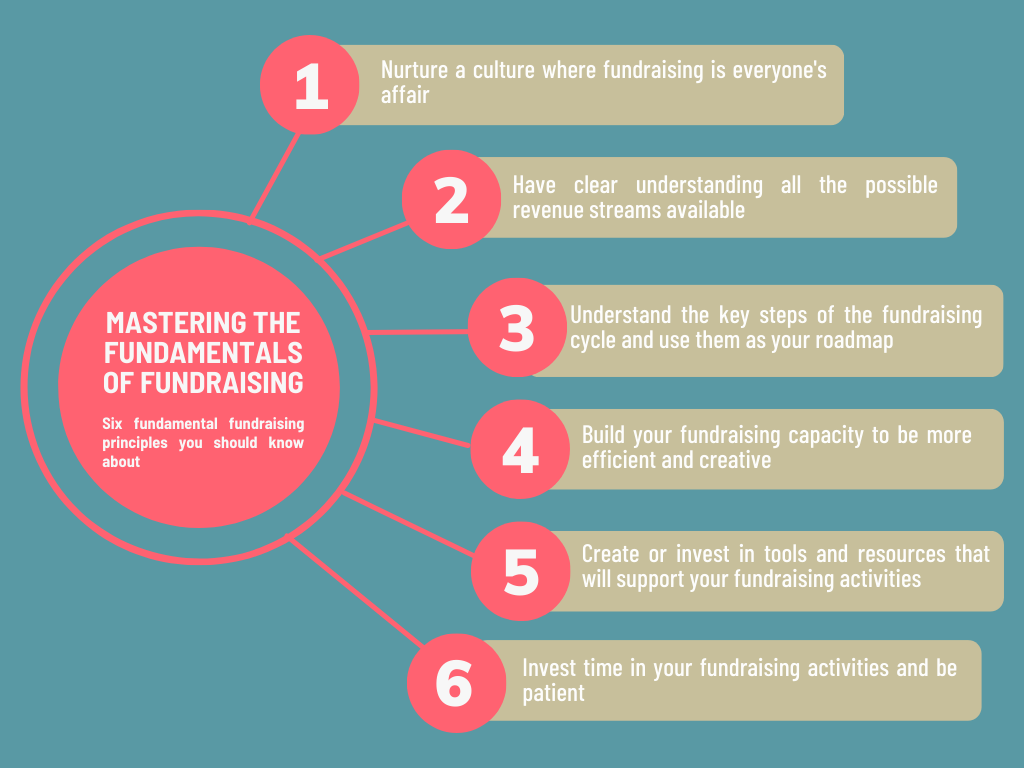
When fundraising is at its best, it serves as a bridge between different stakeholders (beneficiaries, donors, board members, programmes, finance, communications, etc.). Fundraising activities require constant iterative exchanges with these stakeholders:
Furthermore, fundraising should be an integral part of the organisational strategy, therefore board and management’s commitment to fundraising should be made a priority for sustainable organisation development.
Traditionally, not-for-profit organisations have focused their funding models on institutional and private donations. Although other revenue streams exist, most often social impact organisations solicit funds from: public institutions, individuals, companies, and private foundations.
It is important to understand the difference in donor profiles. Understanding key donor characteristics by donor segment will help you:
The fundraising cycle focuses on the process of acquiring donations and securing donor loyalty. The seven key steps are:
A case for support is the general argument for why a non-profit deserves financial or in kind support. The case statement focuses on or highlights critical factors important in arguing for the donation financial support.
Identifying all the possible funding sources and prospective donors who could fund your mission or project.
Once you have identified all prospective donors the most aligned ones are selected based on in-depth research.
In the fundraising ecosystem, communication is an essential component of a successful fundraising strategy. Through extensive research about your prospective donors, you will have a better idea of 1) the type of communication material you will need to produce and 2) the tone and format that is most appropriate for the donor type.
Based on your priority list you will engage with individuals and organisations to build a relationship of trust, to demonstrate your impact and provide opportunities for them to connect with the cause.
Through diligent qualification and cultivation, you will know enough about your donors to make an adapted ask for money, support, or influence to advance your organisation, cause, and projects.
Many organisations fall short at this point. Stewardship is the act of thanking and recognizing donors as well as informing and re- porting on how their contributions have been used.
Over the years fundraising has professionalised. Funders have high expectations when it comes to soliciting funds. They expect organisations to be able to clearly communicate their mission, methodology, solutions and measure their impact in a way that is relevant, convincing, and appealing. With increasing competition to acquire the interest and support of funders, it is important to build fundraising capacity and commit to ongoing training.
Making an inventory of the tools and resources you need to achieve your fundraising objectives is essential.
Below are some key documents / tools that are useful for your fundraising activities.
Invest time on fundraising on a weekly basis. From the moment you reach out to a prospective donor you should count three to eighteen months. Take this into consideration when setting your fundraising objective.
Receiving negative responses is very common, therefore use this opportunity to seek feedback when possible and adapt your strategies seeking constructive feedback when possible.
Further information can be found here: fundraising: a short introduction
Written by Abena Lauber